Lens man: Henri Cartier-Bresson award winner Patrick Faigenbaum captures life in Calcutta

Over the course of his long life and prolific career, photographer Henri Cartier-Bresson provided a chronicle of the 20th century, capturing some of the most definitive images of an era.
Now, every two years, an award in his name supports a photographer to create a new body of work that will, in its own way, document the essence of a place and time. For the most recent cycle, awarded in 2013, the prize went to Paris-based photographer Patrick Faigenbaum to realise his project 'Kolkata/Calcutta', for which he documented the urban surroundings of artist Shreyasi Chatterjee, who paints and uses collage and embroidery in her work. That visual record is now on view at New York’s Aperture Gallery and published as a book by Lars Müller.
The prize, supported by the Hermès Foundation in alliance with Aperture Foundation, makes space for the kind of documentary photography that Cartier-Bresson did so much to define.
Like Cartier-Bresson, Faigenbaum’s work seems to emerge from a finely tuned sense of place and time. 'Patrick’s work is immersive. He really enters the subject,' says Catherine Tsekenis, Director of the Hermes Foundation. Over the course of his two-year award cycle, Faigenbaum made six trips to India, documenting the city in visits that lasted two weeks to one month. He had wanted to work in the region ever since a visit back in 1995.
Instead of using the word 'shoot' to describe the action of photography, Faigenbaum treats the photograph as a slow register of a place rather than the quick action of clicking a button. 'I spend a lot of time thinking about the presence of a place,' he says, explaining that he typically sits in place thinking about the relationships between elements of a picture. 'If the setting is silent, the picture has to reflect that,' he says.
Once he finds the picture, he registers it with his lens. Then, as he puts it, 'I trust my camera.'
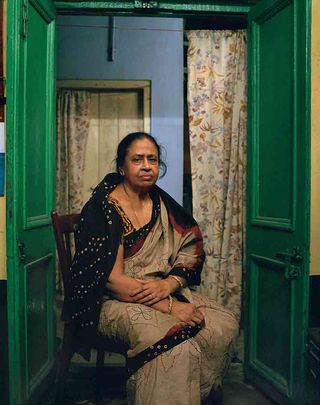
Faigenbaum made six trips to India, documenting the city in visits that lasted two weeks to one month. He had wanted to work in the region ever since a visit back in 1995. Pictured: Mrs. Kalyani Ghosh, Banamali Sarkar Street, north Kolkata, October 2014
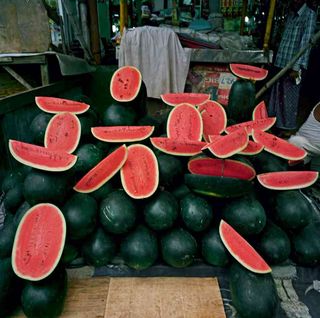
The project largely centres around the urban surroundings of the artist Shreyasi Chatterjee, who paints and uses collage and embroidery in her work. Pictured: Display of watermelons, neighborhood of Rajabazar, north Kolkata, July 2014

'As a whole, the images will constitute both a portrait of this artist in her family and professional settings and a free description of her larger urban environment,' Faigenbaum writes. Pictured: City Highway in the neighbourhood of Gariahat, South Kolkata, October 2014
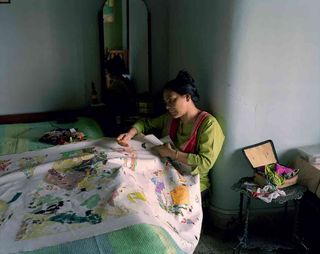
Shreyasi Chatterjee at work embroidering, Lake Town, north Kolkata, March 2011
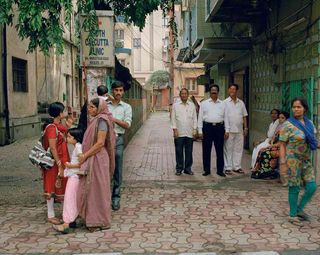
Dover Lane, Ballygunge, South Kolkata, October 2014

In the Santiniketan Express, the train that connects the station in Howrah, Kolkata, with the city of Bolpur, May 2014
INFORMATION
’Kolkata/Calcutta’ is on view until 7 November at Aperture Gallery
Photography courtesy of artist and Aperture Gallery
ADDRESS
Aperture Gallery
547 West 27th Street, 4th Floor
New York
Wallpaper* Newsletter
Receive our daily digest of inspiration, escapism and design stories from around the world direct to your inbox
-
 Pininfarina Battista Reversario is a new one-off electric hypercar
Pininfarina Battista Reversario is a new one-off electric hypercarThe all-electric Pininfarina Battista Reversario is joining its aesthetic inverse in an ultra-select car collector’s garage. We take a look at a car built to a very precise order
By Jonathan Bell Published
-
 Fernando Jorge’s fluid diamond earrings show his curve appeal
Fernando Jorge’s fluid diamond earrings show his curve appealDiscover Brazilian jewellery designer Fernando Jorge's snake-like silhouettes and graphic shapes
By Hannah Silver Published
-
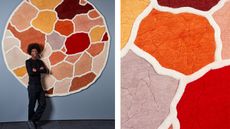 Abreham Brioschi debuts Ethiopia-inspired rugs for Nodus
Abreham Brioschi debuts Ethiopia-inspired rugs for NodusAbreham Brioschi teams up with luxury rug experts Nodus to translate visions from his heritage into a tactile reality
By Ifeoluwa Adedeji Published
-
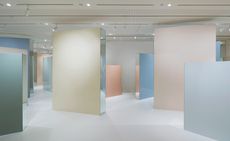 Pastel prisms: Dawn Ng’s free-ranging installation at Hermès’ Aloft space
Pastel prisms: Dawn Ng’s free-ranging installation at Hermès’ Aloft spaceBy Daven Wu Last updated
-
 International photographers bring a ‘Strange and Familiar’ focus to Britain
International photographers bring a ‘Strange and Familiar’ focus to BritainBy Jessica Klingelfuss Last updated
-
 Embellished landscapes: Isabelle Cornaro's transformation of La Verrière
Embellished landscapes: Isabelle Cornaro's transformation of La VerrièreBy Siska Lyssens Last updated
-
 Into the wild: Robert Dallet’s big cat drawings go on show, thanks to Hermès
Into the wild: Robert Dallet’s big cat drawings go on show, thanks to HermèsBy John Gendall Last updated
-
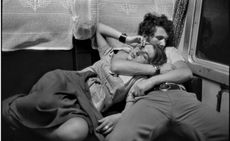 The grand-père of photojournalism: Henri Cartier-Bresson
The grand-père of photojournalism: Henri Cartier-BressonBy Nick Compton Last updated
-
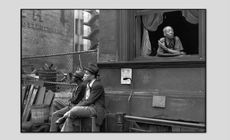 Cartier-Bresson: A Question of Colour’ at Somerset House, London
Cartier-Bresson: A Question of Colour’ at Somerset House, LondonBy Ellen Himelfarb Last updated
-
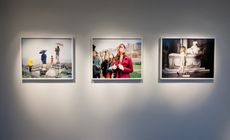 Matt Ducklo and Matthew Monteith exhibition, New York
Matt Ducklo and Matthew Monteith exhibition, New YorkBy Lauren Ho Last updated